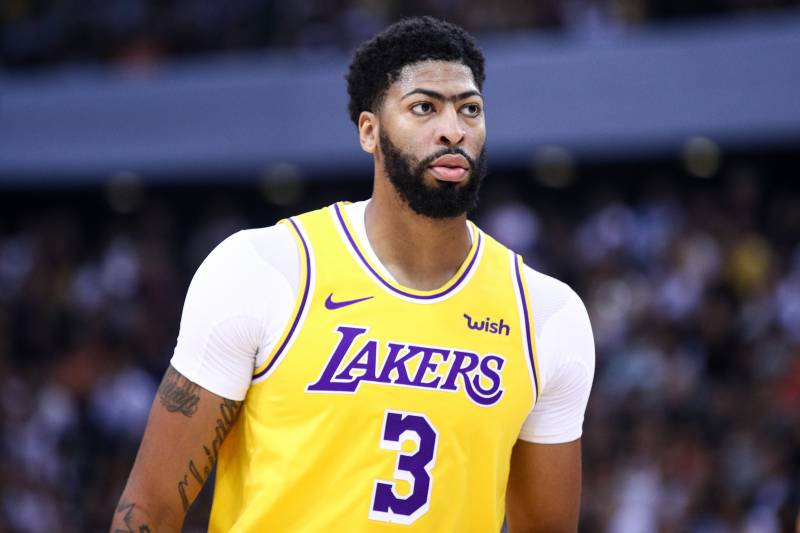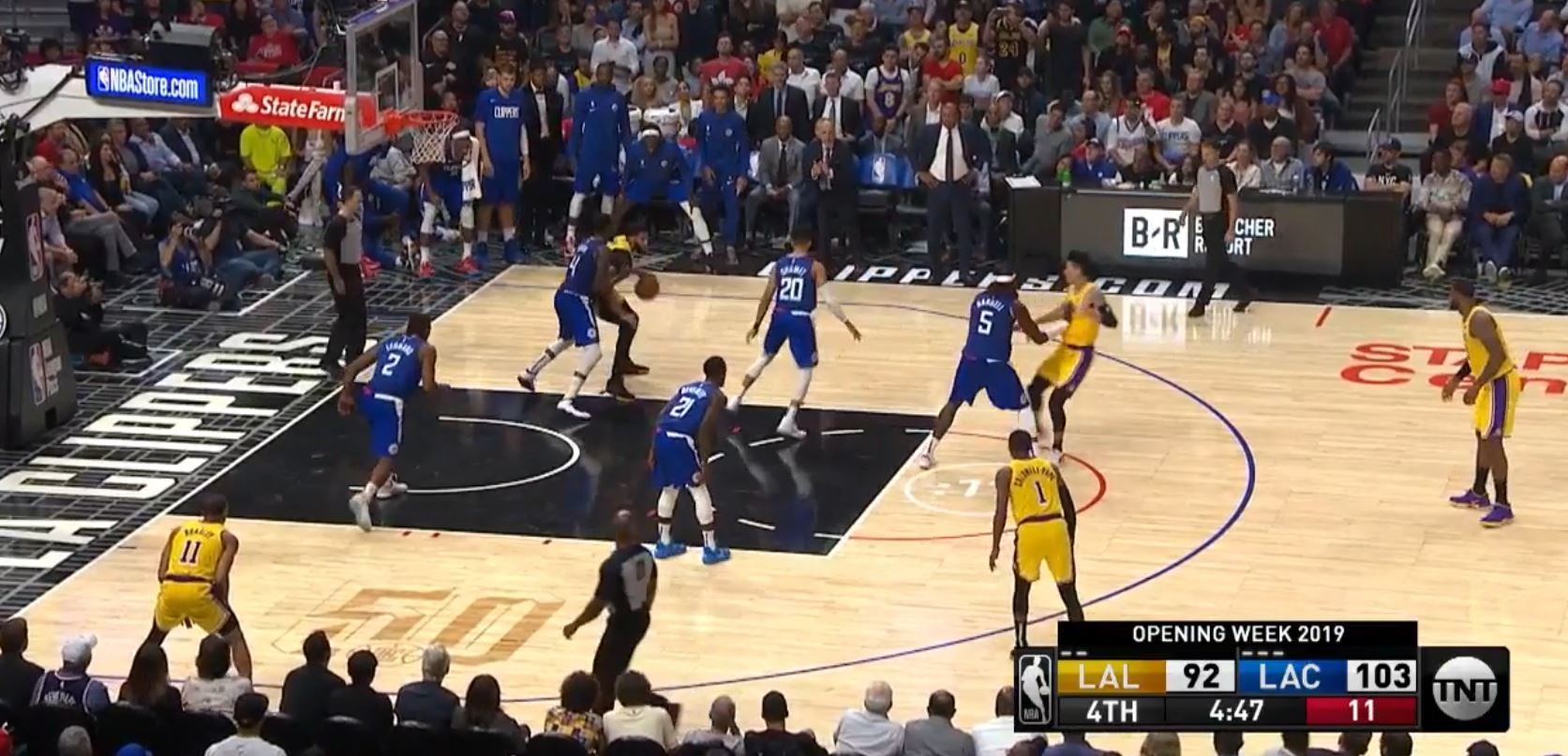Lakers' Long-Term Plan Conflicts With Optimal Usage of Anthony Davis

This should not come as a surprise to anyone: Anthony Davis should be playing center.
It’s likely not even a surprise to Davis himself, despite his insistence on playing power forward.
It’s hardly a secret that the Lakers become infinitely more dangerous
when Davis plays at the five, and it’s something that Frank Vogel has
already been tempted by despite the long-term benefits of having AD play
where he’d prefer.
It took two games for the coach to be openly musing about running lineups that are obviously better.
Resisting that cheat code will be good for the Lakers in the aggregate, beyond keeping Davis fresh – it gives a number of players a chance to coalesce with the team’s two best players and it might actually force the Lakers into some extra work. Self-inflicted, yes, but a little bit of a challenge isn’t exactly a bad thing for a team that’s talented enough to sleepwalk into the playoffs, even in the loaded Western Conference.
Through three games, the Lakers’ season has gone generally as expected: a loss to a deep Clippers team, a win over a competitive but still-settling Jazz team (that was missing Bojan Bogdanovic) and a win over the lowly Hornets.
Frankly, the Lakers don’t need to be clicking on all cylinders to win a boatload of games this season, but that matchup with the Clippers is instructive.
That’s the sort of high-level defensive outfit that they will eventually need to meet in the postseason, and there were a number of plays that showcased the benefits and drawbacks of different lineup combinations.
The Clippers, like most of the league’s elite, are stacked with switchable defenders. They certainly have an embarrassment of riches at the top of the pyramid, but even lesser options like Patrick Patterson can at least hang in there against LeBron James and Davis, and a number of players tried their hand at the job on opening night.
The Lakers need to be prepared for similar matchups down the line, and while the first-game caveats still apply, it was pretty clear from the jump that playing Davis at power forward does little to tax a deep defense.
In game one, we didn’t see many LeBron-Davis pick-and-rolls. Perhaps that’s the Lakers holding onto the ace in the hole, because that should be an absolutely devastating play whenever Vogel dials it up.
The following was the first LeBron-Davis pick-and-roll of the game.
The Clippers seem happy to switch, knowing that driving lanes are
crowded by the presence of JaVale McGee – Montrezl Harrell is already
moving to protect the rim right when Davis begins to cut. As the play
rolls on, McGee tries to vacate the paint but ends up at the free throw
line, an even more useless locale than the dunker spot. Again, the
Clippers are lucky in that they can defend that initial action with
players that can hold their own, but the Lakers aren’t forcing the
defense to make tough decisions or reads. They know the support will be
there without conceding an even more dangerous look.
On this play, the Lakers dump the ball down to Davis to work on Moe Harkless. Harkless is a decent defender, but that’s enough of a mismatch to trust Davis in a one-on-one scenario. The problem is that it’s barely a one-on-one. Harrell is already preparing to step into the lane should Davis get past Harkless, and Avery Bradley’s fake screen for Quinn Cook doesn’t fool anyone (Cook no-selling it doesn’t help). It actually drags Patrick Beverley to the paint and eventually right into Davis’ path.
McGee doesn’t move on this play, but there’s really nowhere for him
to go. A clear-out for Davis doesn’t really work if one of the other
players on the floor can’t force the defense to take their feet out of
the paint. Beverley can abandon his man as soon as Davis makes a move
because there’s nowhere else for the ball to go. Bradley’s cut destroys
this play entirely, but Davis is meeting at least Harrell at the rim no
matter what.
When Davis is operating as the biggest player on the floor, it’s a whole new world. Look at this:

Harrell wants to dive down to help JaMychal Green but can’t reasonably leave a red-hot Danny Green. Landry Shamet has to try and get in the passing lane out to LeBron up top, or to Green if Harrell decides to bolt. Kawhi Leonard actually has to choose here – he leaves Bradley in the corner, and Davis makes the pass for an open shot that misses. Even with the result, it’s an easy shot every time. Imagine that setup with McGee or Howard right on the edge of the paint instead.
Ultimately, the Lakers are lucky enough to have two of the game’s elite players on their roster, and few teams boast the mix of defenders that the Clippers do. The Lakers can reasonably cruise through the regular season running less-than-perfect stuff and rely on the otherworldly talents of James and Davis to bail them out against competition that simply can’t compete. It’s a hell of a safety blanket to have.
Davis’ health should be the top priority but the Lakers must now balance that with knowing that it’s going to take away valuable reps with their optimal configurations, even if Davis won’t be tethered to another center for every single second during the regular season. That’s valuable practice lost for a team that can’t fall back on continuity, and there’s also the notion that the Lakers can’t truly screw around in the regular season if they’re hoping to earn homecourt advantage for multiple rounds in the postseason.
It’s rather obvious that the Lakers are at their best when Davis plays center. For as long as the team limits those looks, however, things may be a little uglier than you’d expect given the superstar talent on the roster – even if the long-term plan unfolds as the Lakers expect.
Post a comment